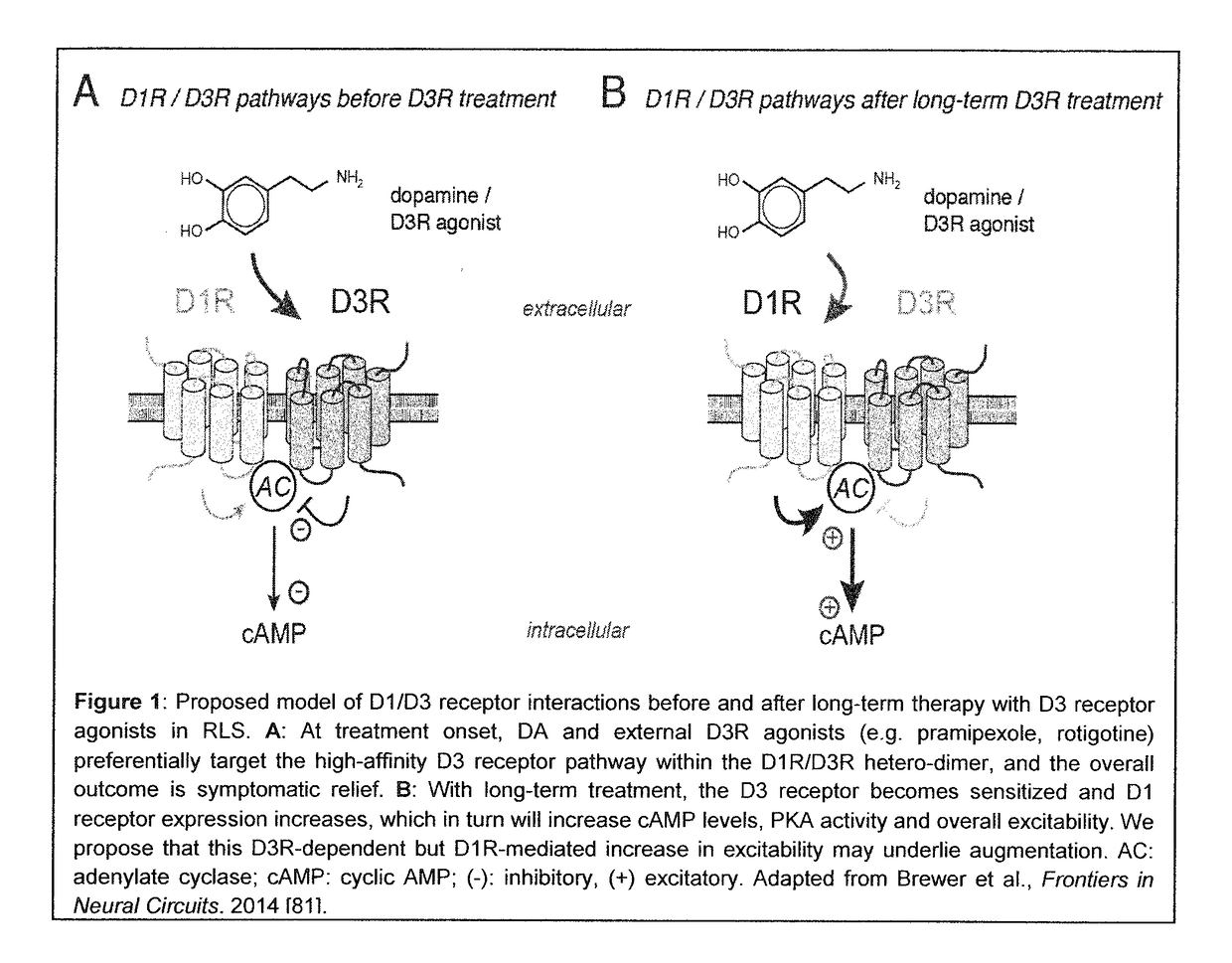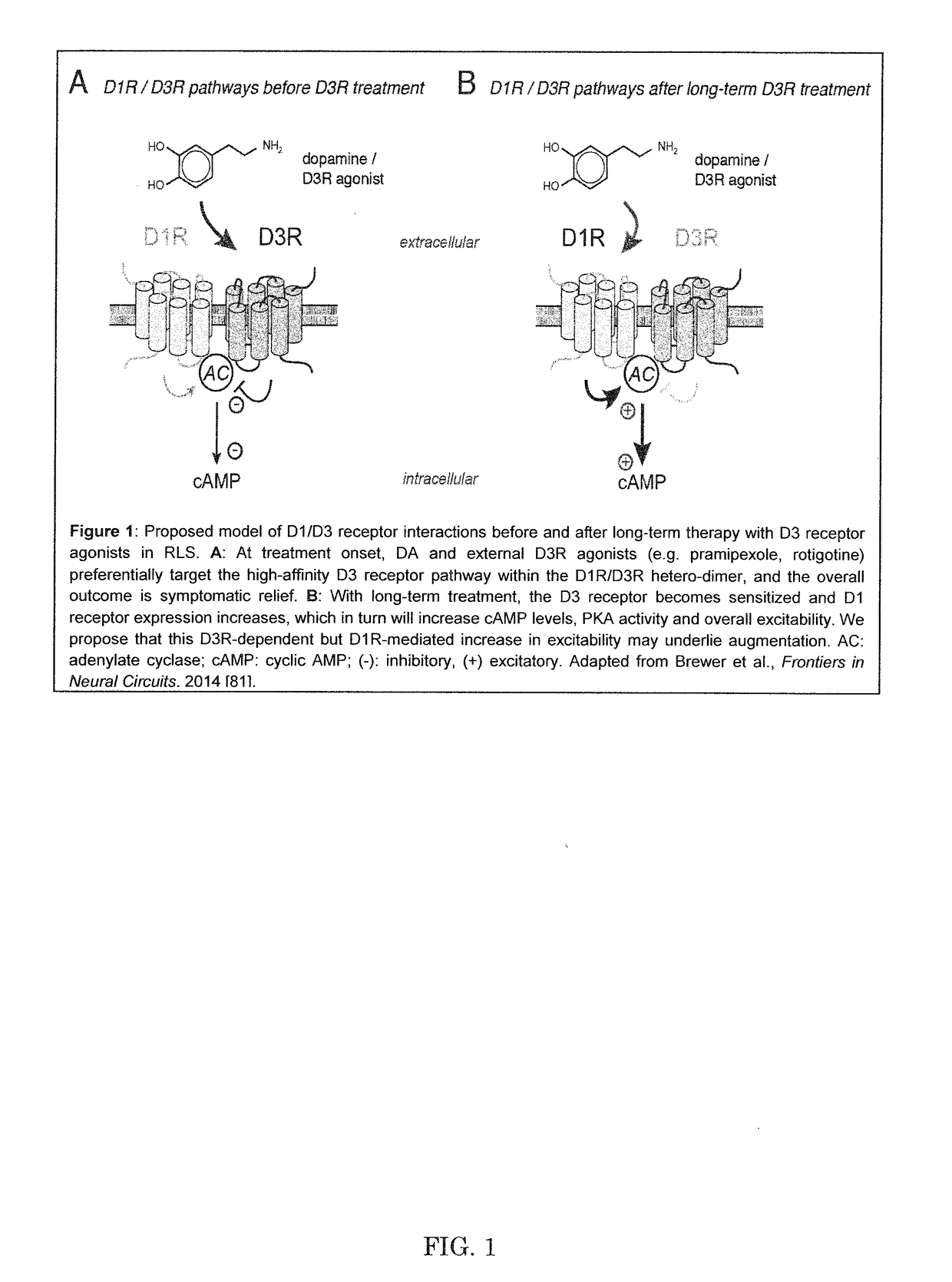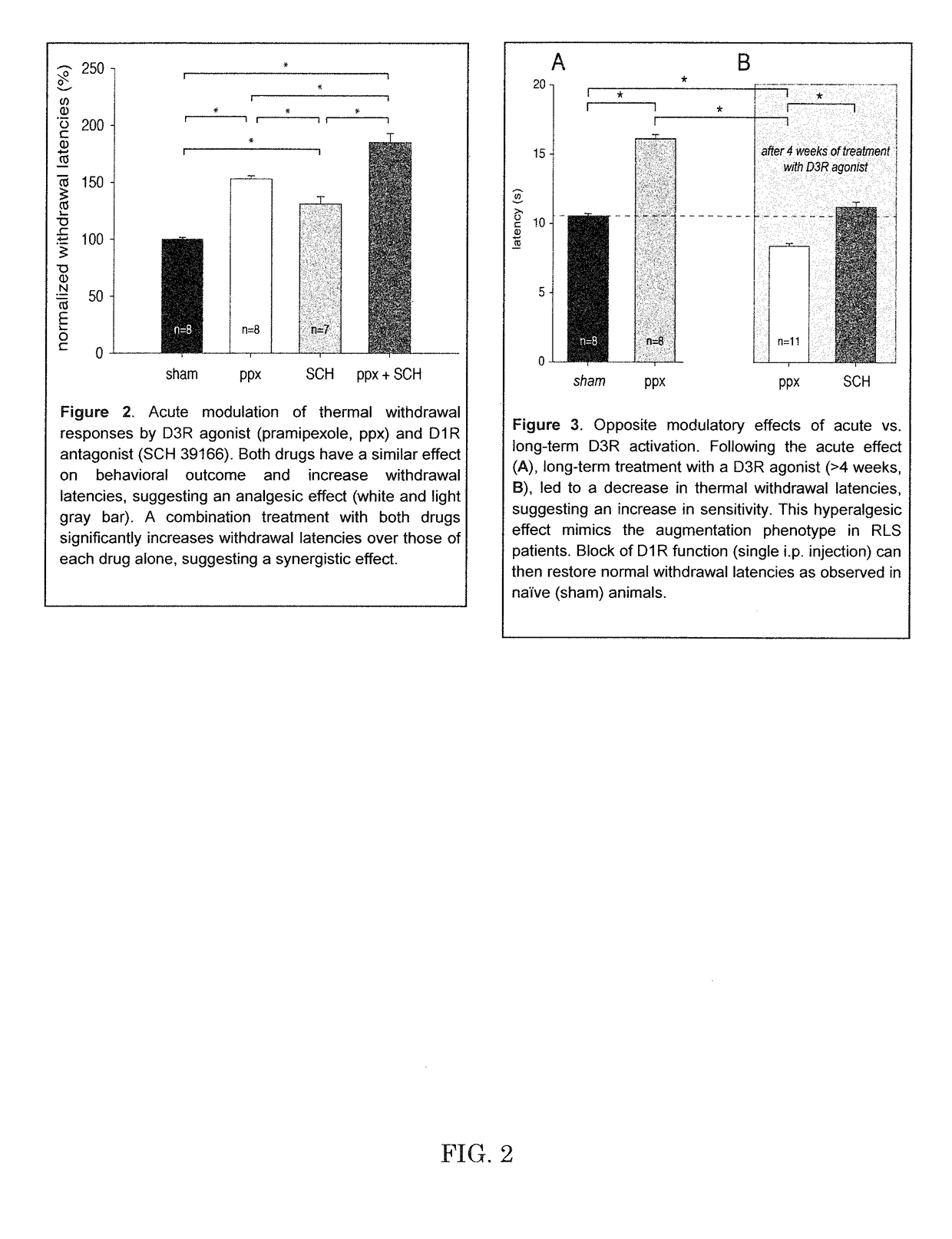Treatment and management of augmentation in restless legs syndrome
a technology for restless legs and augmentation, which is applied in the field of restless legs syndrome treatment and management, can solve the problems of uncontrollable urge to move, unsatisfactory legs sensation, and limited clinical utility of da agonists for many patients, so as to reduce or reverse augmentation and avoid side effects
- Summary
- Abstract
- Description
- Claims
- Application Information
AI Technical Summary
Benefits of technology
Problems solved by technology
Method used
Image
Examples
example 1
Test the Hypothesis that Long-Term Treatment with D3R Agonists in the Intact Animal Leads to Augmentation that can be Restored by Block of D1R Function
[0081]The objective of these studies is to establish the role of the dopamine D1 receptor system in the emergence of D3 receptor-agonist induced augmentation. The working hypothesis is that continuous long-term application of a D3 receptor agonist will invoke a switch from inhibition to excitation. Specifically, we will treat animals with D3 receptor agonists currently used to treat RLS (e.g., pramipexole and rotigotine) and assess the effects of these compounds on leg withdrawal latencies when the animals are subject to a painful thermal stimulus. We predict that the initially analgesic effect (extending withdrawal latencies) of the D3Rs will be replaced over time by a hyperalgesic effect (decrease in withdrawal latencies).
[0082]We found that both D3R agonist and D1R antagonist increased thermal withdrawal latencies (pramipexole [ppx...
example 2
Test the Hypothesis that the Isolated Spinal Cord Contains All the Necessary Building Blocks to Induce, and Recover from, D3R Agonist-Mediated Augmentation
[0099]The objective of this study is to establish that the isolated spinal cord houses the necessary cellular machinery and neural circuitry to implement the D3R agonist-induced modulatory changes that lead to the behavioral changes observed in vivo. We will test the hypothesis that prolonged bath-application of a D3R agonist will induce a biphasic (from inhibitory to excitatory) modulatory response in the isolated spinal cord. Specifically, we will assess the changes in spinal reflex amplitudes (SRAs), using the monosynaptic stretch reflex in the lumbar spinal cord as a model of neural circuit function. We predict that D3R application will initially reduce SRAs in WT and D1KO animals alike, and that this modulatory effect will gradually switch over time in WT alone to then increase SRAs. The rationale of this aim is to show that ...
example 3
Changes in Thermal Withdrawal Latencies over Time with Chronic Injections
[0107]We had previously tested only the effects of the D3R agonist, rotigotine (Neupro). Here we added testing of the second most-used treatment option for RLS, pramipexole (0.5 mg / kg / day), and we also established the time course of the switch from analgesia to hyperalgesia (FIG. 7). FIG. 7A depicts the results of the daily measurements, and FIG. 1B the weekly averages. We found that withdrawal latencies to a thermal stimulus significantly increased in week 1 to 204.81%±6.3% of control (FIG. 7B). This analgesic effect decreased in weeks 2 (158+ / −12% of control) and 3 (135+ / −6.5% of control) but was completely lost in week 4 (85+ / −11% of control).
Example 4
Changes in Thermal Withdrawal Latencies Pre and Post Injections with Pramipexole
[0108]Animals were tested before and after a single injection of a D3R Agonist (0.5 mg / kg pramipexole) both before the first injection in week 1 and immediately before the last inje...
PUM
| Property | Measurement | Unit |
|---|---|---|
| periods of time | aaaaa | aaaaa |
| affinity | aaaaa | aaaaa |
| thermal withdrawal responses | aaaaa | aaaaa |
Abstract
Description
Claims
Application Information
 Login to View More
Login to View More - R&D
- Intellectual Property
- Life Sciences
- Materials
- Tech Scout
- Unparalleled Data Quality
- Higher Quality Content
- 60% Fewer Hallucinations
Browse by: Latest US Patents, China's latest patents, Technical Efficacy Thesaurus, Application Domain, Technology Topic, Popular Technical Reports.
© 2025 PatSnap. All rights reserved.Legal|Privacy policy|Modern Slavery Act Transparency Statement|Sitemap|About US| Contact US: help@patsnap.com



